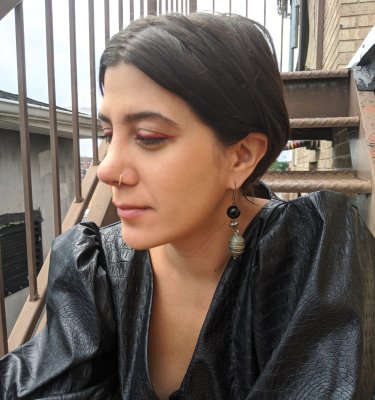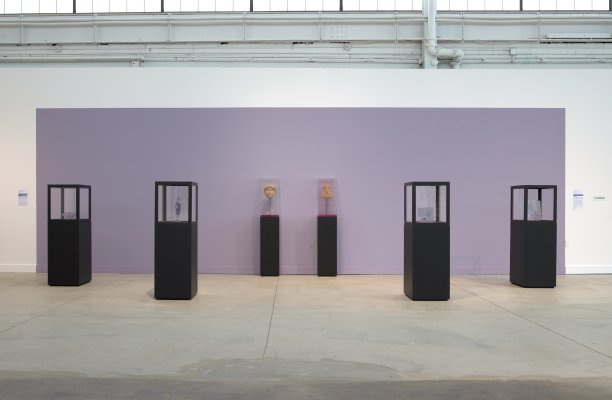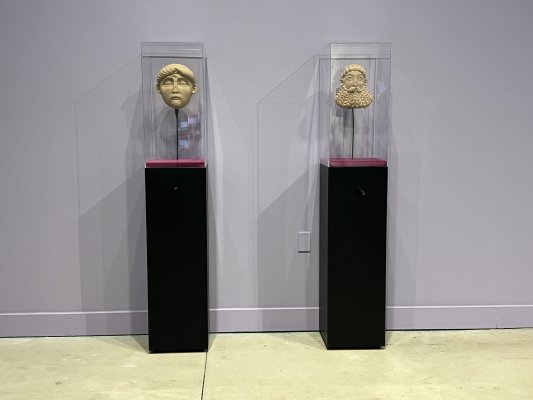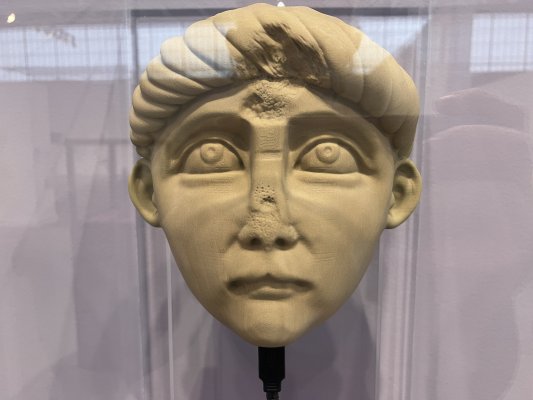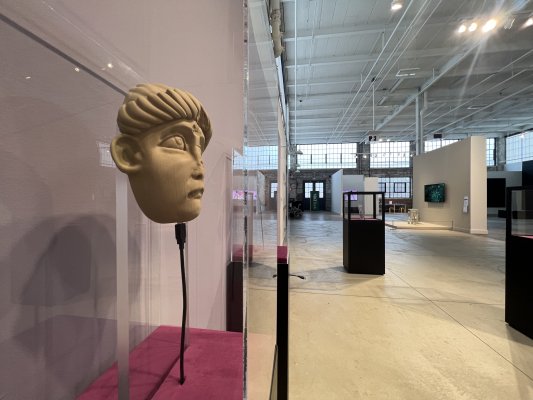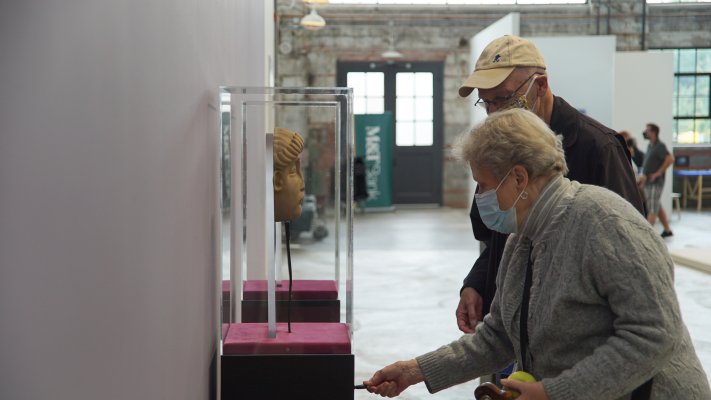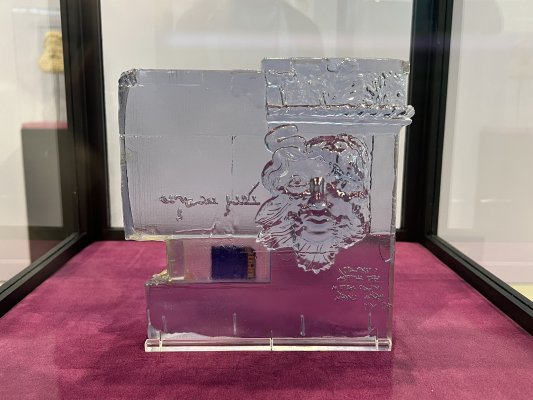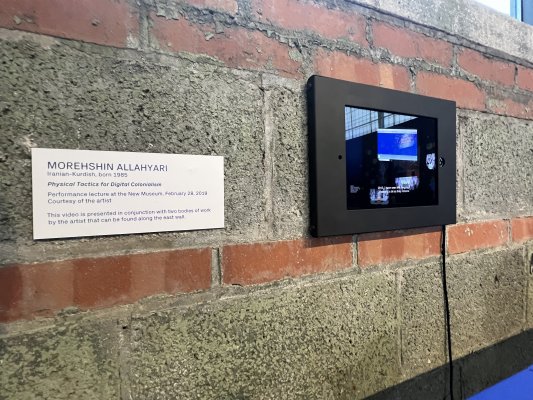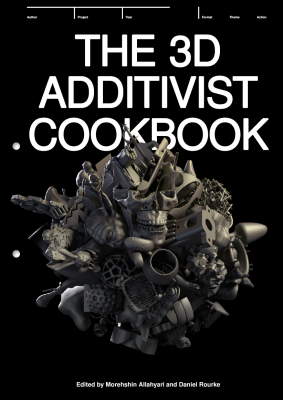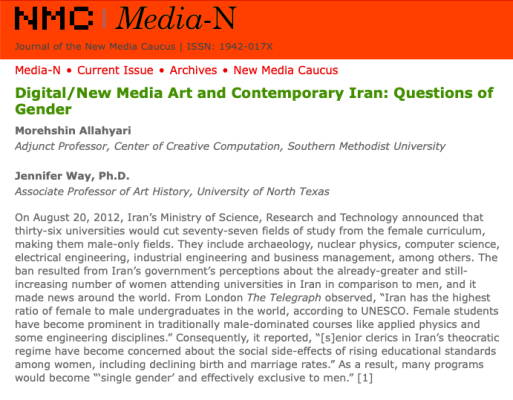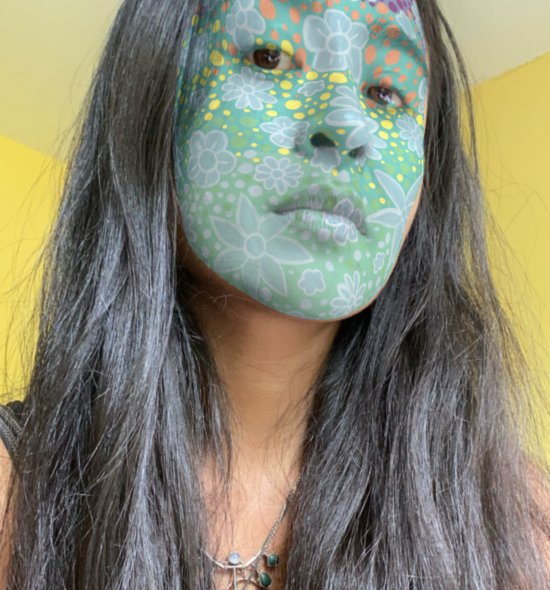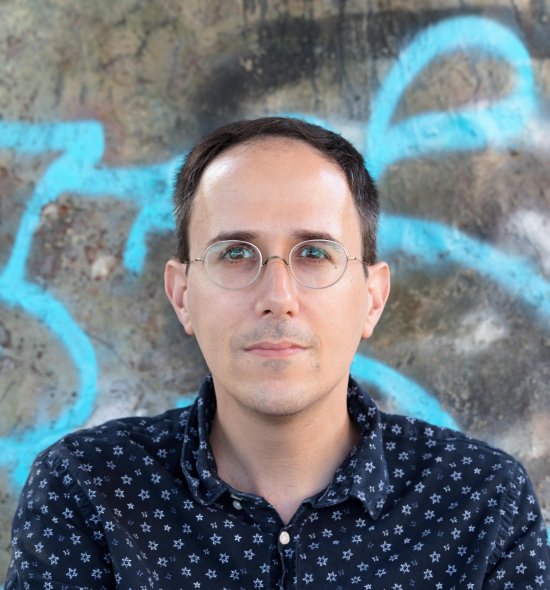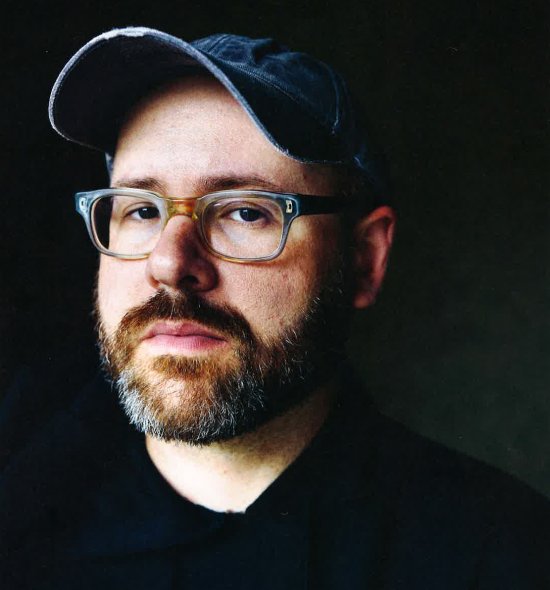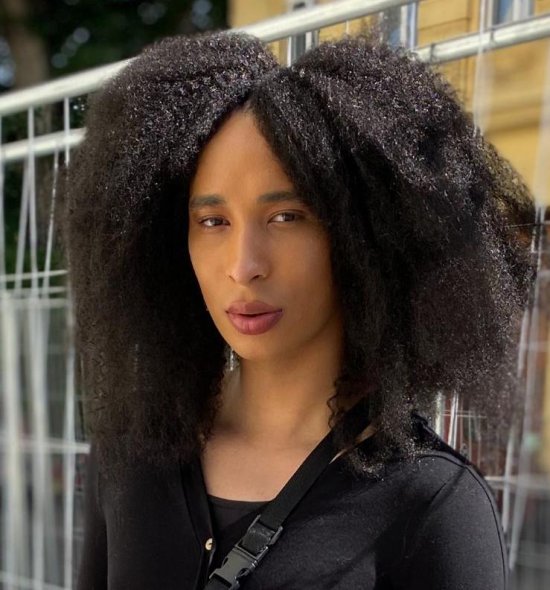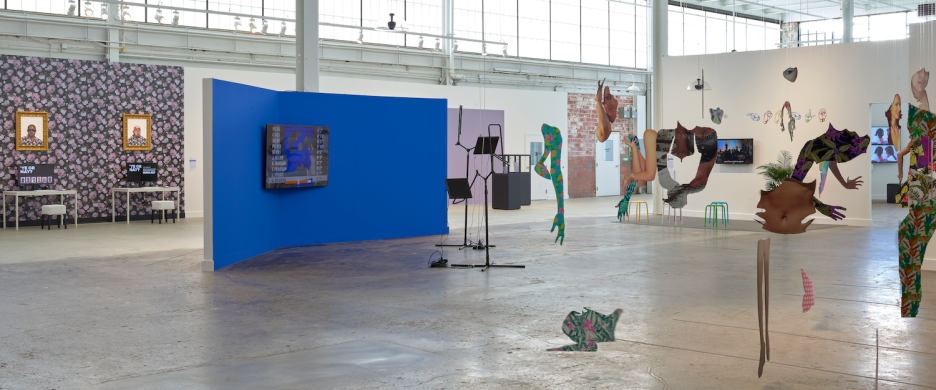Material Speculation: Isis, 2015–16
Four 3-D printed plastic sculptures with embedded portable data-storage devices
Courtesy of the artist
“I love them in a way that I haven’t loved any other works of art I have created. They are part of my culture, my people, my history. And I want to protect them [. . .] not only from ISIS, but from Silicon Valley, from Google, from all the tech companies in the West, from all the white men and their colonialist technologies.”
—Morehshin Allahyari, “Physical Tactics for Digital Colonialism”
These translucent, ghostly sculptures are reproductions of ancient Mesopotamian artifacts that were destroyed by ISIS at Iraq’s Mosul Museum in 2015. Each began as a digital model that was then 3-D printed using plastic. Because plastic is made from crude oil, the sculptures point to the complicated politics of oil in the region, which were shaped by the West’s colonial extraction of its natural and cultural resources, including the looting of artifacts.
After the destruction of the original objects by ISIS, Western tech companies promoted the idea of using 3-D modeling to recreate them. Morehshin Allahyari (she/her/hers) grew up in Iran during the Iran-Iraq War, when the United States sold arms to Iraq, and lived through the ensuing decades of US intervention in the region. In her eyes, this transformation of Middle Eastern heritage into Western intellectual property amounts to what she calls digital colonialism. By embedding her sculptures with memory cards that contain their source files and other archival materials but are inaccessible to us, she emphasizes that the politics of digital tools are not transparent and that access to them is not universal. For colonial subjects in particular, being visible is not the same thing as being free.
